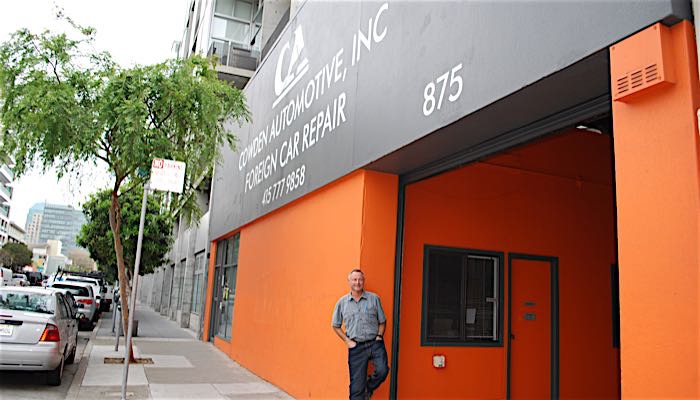by Steve Ferrante
CEO
Sale Away LLC
 In order to achieve ultimate success, shop owners must ensure that all of their systems, processes, programs, policies, procedures and initiatives are properly aligned to focus on improving the customer experience. A major part of this accomplishment involves making certain that all employees consistently execute customer-focused behavior.
In order to achieve ultimate success, shop owners must ensure that all of their systems, processes, programs, policies, procedures and initiatives are properly aligned to focus on improving the customer experience. A major part of this accomplishment involves making certain that all employees consistently execute customer-focused behavior.
The following are the two most important rules of achieving a customer-focused shop.
No. 1: 100% Customer Focus 100% of the Time
Customers deserve to be treated with the complete focus and personalized attention of your service writer and technicians. Although a customer’s vehicle situation may be the same (or quite similar) to countless others faced in the past, remember the only thing that matters to each of your customers is themself — their situation, problem, needs or wants. Maximizing effectiveness in customer interactions takes clarity of focus and particular attention to effectively executing proper communication and relationship skills.
If you’re doing anything less than focusing 100% of your attention on customers, their needs, and how you can help solve their problems, then you’re not maximizing your performance potential.
In the film “Groundhog Day,” Bill Murray portrays a Pittsburgh TV weatherman who, while on assignment covering the annual Groundhog Day event in Punxsutawney, PA, finds himself caught up in a time loop phenomenon, repeating the same day over and over again.
If you’ve worked in the automotive service industry for more than a couple of years, you’re most likely experiencing your own version of Groundhog Day, with each new day similar to the one before.
For example, you arrive at the shop at the same time, you conduct your same pre-work ritual, you open at the same time, customers start arriving and calling, it gets busy as work progresses and customers come and go, and then you close at the same time. During business hours, the only thing that seems to change are the faces in the crowd, otherwise it’s the same routine day in and day out.
This situation often creates an “auto-pilot” state of being in which employees get in the habit of going through the motions and miss opportunities to truly connect with customers and build relationships. Obviously, if this condition is not observed and modified, it can negatively impact the customer experience — and your shop’s sales. To remedy the situation, employees must always be alert and aware, treat each customer interaction as unique, and provide undivided personalized attention and care.
No. 2: Operate Selflessly — Proper Customer Service is Selfless, Not Selfish
Delivering world-class customer service is a selfless act. Selflessness is defined as “the act of sacrificing one’s own interest for the greater good.” As professional service providers, this is precisely the position we must assume in our customer interactions.

The biggest problem with your own personal situation and concerns is that they have absolutely nothing to do with the most important person in the business environment — the customer.
Do not confuse selfless behavior with the very real desire to sell customers your products and services (the what), but rather the methodology behind it (the how). When customers sense you’re working in their best interest by helping them make the best purchase decision (rather than trying to oversell them), they are far more likely to buy today and return to do so in the future.
Selfless behavior means:
• Always consider and prioritize the needs of the customer before those of your own.
• Demonstrate that what is important to the customer is always important to you.
• Never judge or listen through filters.
• Remember that the most important thing to your customers is themselves.
The Walt Disney Company is widely considered to be the most customer-centric company in the world and the benchmark by which other service-oriented companies are (or should be) measured. Just how did Disney create the most customer-centric experience on the planet?

Everything done at Disney theme parks is carefully controlled to focus on customers, enhance their experiences and create lasting, positive memories. Disney’s “Imagineering” (imagination engineering) discipline manages everything park guests can experience with their senses; what they see, hear, touch and smell — even timing when certain sights and smells hit them to maximize the emotional impact.
As fantastic as the physical aspects are, it still would not be a world-class customer experience without the employees, who interface with guests and attend to all the details. Disney employees are referred to as “cast members,” since they play an active role in the daily customer production of the “Wonderful World of Disney.” All employees receive that title regardless of whether or not they are dressed in a character uniform.
As a Disney cast member, employees are trained that there are only two places they can be during business hours: “onstage” or “offstage.” Everything the customer can see while on the park grounds is considered onstage. Everything behind the “Employees Only” doors, hiding the views of park guests, is considered offstage.
To ensure that all onstage activity is focused on the customer, Disney manages cast member behaviors. While onstage, Disney employees must never eat, drink, smoke, sleep, sit down, chew gum, fold their arms or lean against a wall or railing.

The simple reason Disney employees cannot engage in any of these activities while onstage is that each one of these behaviors is me-focused and not customer-focused. As a Disney employee, you may feel like sitting down or leaning against a wall to take a break while working in the park, but you are trained that onstage activity is not about you. Therefore, all your actions must be focused on improving the customer experience, not your own.
What ‘Not’ To Do
Consider two employees working in an independent repair shop: the assistant manager and a service writer who helps out when the owner or manager is out, as was the case at this time. There were two customers occupying the waiting area in the shop: a man in his mid-20s who was waiting on new tires for his pickup truck and a woman in her 30s who was having her vehicle’s oil changed.
The man was alone. The woman had her four-year-old daughter with her. During a half-hour period, there was about 15 minutes during which there was no way either employee could be customer-focused with these two customers, as they were both busy tending to others and handled several incoming phone calls and face-to-face transactions. However, for the other 15 minutes, they had plenty of time to walk the 10 or so steps to the waiting area and be customer-focused: introduce themselves, offer a cup of coffee, provide a progress update, etc.
Instead, they took that available time (and customer engagement opportunity) to be me-focused: talking loudly about a party one had attended over the weekend. Worse, the story was peppered with profanity.
The male customer was reading a magazine and appeared unfazed by the employees’ conversation. The child was entertaining herself with some toys and was oblivious to the chat.
The mother, on the other hand, was very tuned in and, judging by her uncomfortable body language and look of loathing, was appalled and upset by the interaction and the close proximity to her child. The only time either one of the employees spoke to the woman was when they called out to let her know her vehicle was “all set.” Even this simple act lacked customer focus as the broadcast of her vehicle’s completion was a brisk shout of “’94 Subaru,” instead of properly using the customer’s name.
While this particular customer did not confront the employees about their careless behavior, her uncomfortable body language and the way she sheltered her daughter and stormed out of the shop spoke volumes about her desire to detach herself from the business — most likely for good!
Stick to the following customer-focused checklist to ensure success:
• Be proactive and acknowledge customers immediately — don’t keep them waiting.
• Focus on the interaction and don’t rush customers.
• Maintain positive communication; negative communication disengages customers.
• Avoid discussions in the presence of a customer that do not pertain to that particular customer.
• Make productive use of down-time to engage with customers and get to know them.
• Always use the customers’ name; never refer to customers by their vehicle make and model.
• Always be on alert for “situational excellence” opportunities to impress customers.
• Keep all non-customer personal discussions offstage in the office, break room, etc.
• Keep all non-customer activities (smoking, cell phone use, etc.) offstage and out of customers’ view.
• Thank customers and encourage them to return.
• Make customers feel special.
Steve Ferrante is the CEO of Sale Away LLC and has more than 20 years of successful sales, sales management and sales training experience. Through his Pinnacle Performance sales and customer service training program, he has received national acclaim for teaching independent tire and auto service businesses how to improve customer relations and produce greater sales results. Steve can be reached directly at 866-721-6086 ext. 701 or [email protected].

